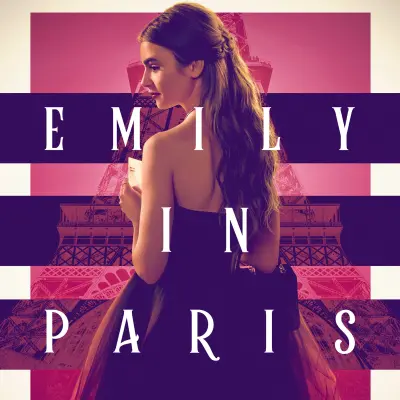With Emily in Paris, Netflix is pioneering a genre called "Ambient TV"
-

Emily in Paris really is intended to be a background distraction as viewers surf the web on their phones," says Kyle Chayka. "Ambient denotes something that you don’t have to pay attention to in order to enjoy but which is still seductive enough to be compelling if you choose to do so momentarily," says Chayka. "Like gentle New Age soundscapes, Emily in Paris is soothing, slow, and relatively monotonous, the dramatic moments too predetermined to really be dramatic. Nothing bad ever happens to our heroine for long. The earlier era of prestige TV was predicated on shows with meta-narratives to be puzzled out, and which merited deep analyses read the day after watching. Here, there is nothing to figure out; as prestige passes its peak, we’re moving into the ambient era, which succumbs to, rather than competes with, your phone. Emily in Paris was just renewed for a second season; its formula of thin fictional storytelling wrapped in exotic backdrops was an instant success that seems destined to be reiterated many times over, in other locales, with other Emilies. But Netflix’s back catalogue of ambient options is made up of reality shows: Dream Home Makeover is ambient interior decorating; Taco Chronicles, ambient foodie travel; Get Organized with the Home Edit, ambient cleaning; Street Food, ambient cooking; MeatEater, ambient outdoorsmanship. What these shows all have in common is their placidity—there’s little in the way of conflict or tension—and their reliance on B-roll, the footage that filmmakers intersperse with their main shots to smooth transitions between cuts. There often seems to be more B-roll than A, however."
TOPICS: Emily in Paris, Netflix
More Emily in Paris on Primetimer:- Is there going to be Emily in Paris season 6? Renewal status and more
- Emily in Paris season 5: Release date and time, where to watch, and what to expect
- What happened to Diego Borella? Emily in Paris assistant director’s on-set cause of death explored
- Who was Diego Borella? All you need to know as Emily in Paris assistant director dies at 47 after collapsing on set
